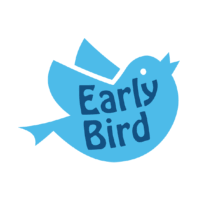Causes
Autism spectrum disorder (ASD) often runs in families and there are strong genetic influences in the development of ASD. If a child has ASD, there is about a ten percent chance that another sibling will have it (Wood 2015).
ASD and attention-deficit/hyperactivity disorder (ADHD) share about 50–70% of their genetic factors, which is the most likely reason why they are often found together in a child, or in a family (Steijn 2012).
As well as genetics, the other important factor at play is environmental influence, which may contribute to the development of ASD. Possible environmental factors include (Park 2016):
- having older parents, being exposed to teratogens during pregnancy (eg, thalidomide, anticonvulsants and organophosphates) and certain viral infections (eg, influenza, cytomegalovirus).
- low birth weight, very early delivery and lack of oxygen during birth
- factors after birth, such as autoimmune disease, viral infection, lack of oxygen and mercury poisoning
It is noteworthy that there is no evidence for a link between childhood vaccination and ASD.
Diagnosis
If any child or young person has developmental delay, emotional and behavioural problems, psychiatric disorders, impaired mental health or genetic syndromes then an assessment for ASD should routinely be done (SIGN 2016).
Girls with ASD may have different symptoms and level of impairment than boys (SIGN 2016). ASD is often misdiagnosed in girls, possibly because the assessment isn’t sensitive or specific enough to pick up the condition in girls and because of social camouflaging (SIGN 2016).
The most rigorous approach to diagnosis is an assessment carried out by an experienced and skilled multidisciplinary team (SIGN 2016). As part of this, all children and young people with ASD should have a comprehensive evaluation of their speech and language and communication skills. A wide range of assessments for this are available (SIGN 2016). The current ‘gold-standard’ assessment tools are the Autism Diagnostic Observation Schedule (ADOS) and Autism Diagnostic Interview-Revised (ADI-R). A cognitive or neuropsychological assessment may also be helpful to establish the relative strengths and difficulties of each child (SIGN 2016).
Non-pharmacological treatment
Approaches that help parents develop strategies for interacting with their child, and managing their behaviour are an effective early intervention in ASD (Oono 2013). They may help families build relationships, as well as empowering parents to act confidently and improving mental health (SIGN 2016).
Interventions to support communicative understanding and expression in children with ASD, such as the Picture Exchange Communication System (PECS) and the use of environmental visual supports may be effective at improving communication and behaviour (SIGN 2016). PECS is a programme devised to develop social and communication skills in children with ASD using picture symbols.
There is some evidence that social skills groups can improve social skills for some children and adolescents with ASD, though more research is needed to draw more robust conclusions (Reichow 2012).
High-intensity behaviour interventions, based on applied behaviour analysis (ABA), may improve cognitive functioning, language skills, a child’s ability to adapt, including social and daily living skills (SIGN 2016).
There are several treatments proposed for ASD, for which no evidence has yet been found:
- high-pressure (hyperbaric) oxygen therapy (Xiong 2016)
- chelation (the removal from the body of toxic heavy metals) (James 2015)
- acupuncture (Cheuk 2011)
- intravenous secretin (Williams 2012)
- omega-3 fatty acids supplements (James 2011)
There is some evidence that music therapy may help children with ASD to improve their skills in social interaction and verbal communication. Music therapy may also help to enhance non-verbal communication skills (Geretsegger 2014).
Medicines
There are no approved medical treatments for core symptoms or comorbid mental-health conditions for adults with ASD. However, the use of the antipsychotics risperidone and aripiprazole for the treatment of irritability in children with ASD has been approved by the US Food and Drug Administration. Children and young people taking aripiprazole may be less irritable and hyperactive, and have fewer repetitive, purposeless actions. However, side effects such as weight gain, sedation, drooling and tremor can impact significantly on their quality of life (Hirsch 2016).
Medicines are available for some of the common co-existing health problems such as ADHD, depression and anxiety. However, there is a lack of evidence to support their effectiveness in individuals with ASD. There is also some evidence that individuals with ASD may present with more side-effects to these medications in comparison to the general population.





